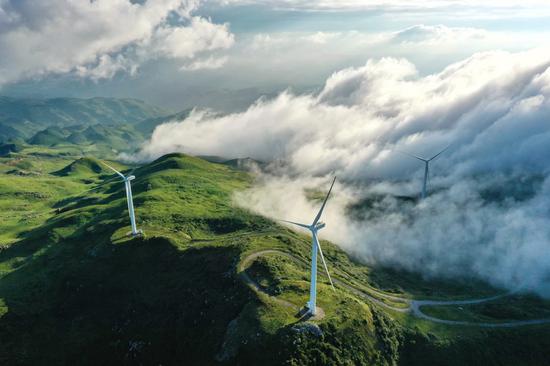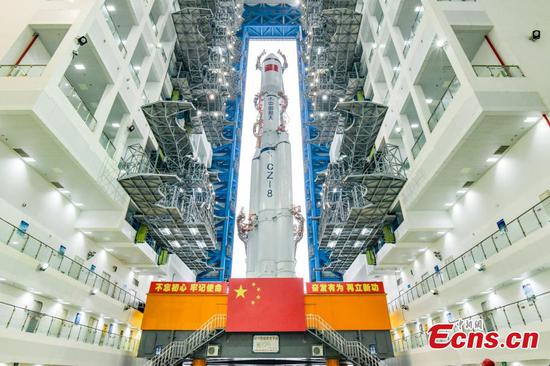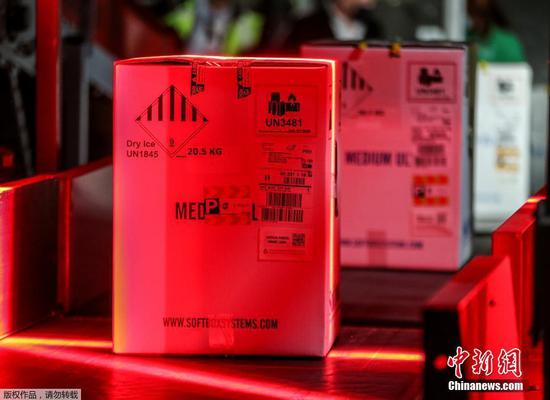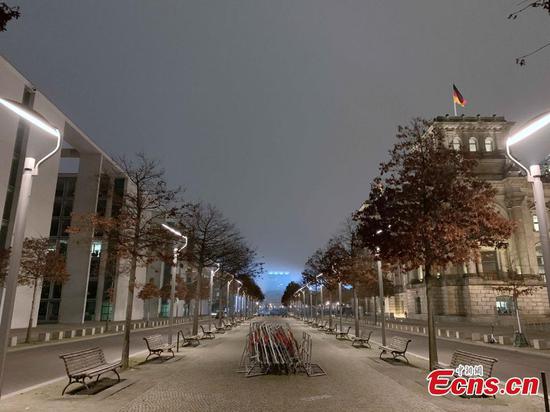
Aerial photo taken on Aug. 19, 2020 shows wind turbines in Jiucaiping scenic spot in southwest China's Guizhou Province. (Xinhua/Liu Xu)
INNOVATION AND COLLABORATION
As the trend of energy transition keeps moving forward, experts believe it cannot happen naturally without collective commitment of governments and public sectors.
According to the IEA's analysis, global emissions would need to fall by 40 percent by 2030 in order to reach net zero by 2050, which requires large-scale investments in renewable energies and innovation in new technologies.
In its 2020 Energy Technology RD&D (research, development and demonstration) Budgets report published in October, the IEA found that estimated global public low-carbon energy RD&D spending rebounded in 2016 following two years of decline, and it has been on the rise since then, reaching a new high in 2019.
"Notably, public spending in low-carbon energy R&D grew faster than total energy R&D budgets, at about 7 percent year-on-year growth rate," the report said.
However, it also pointed out that the encouraging trends warrant further examination in 2020-2021 as the impacts of the COVID-19 pandemic on global energy systems unfold.
Emphasizing the importance of technology and innovation, Gant argued that investment from both government and private companies is crucial to the contribution of energy transition.
"We can expect that the investments that are being made are going to create pervasive and persistent disruptive changes to energy systems. And this is going to be among the current interests as well as new innovators and interests of disrupting traditional models," she said.
Besides investment, collaboration among nations and sectors is considered key to success. Industry official noted that design thinking is needed to create applications of new technologies.
"We're going to need collaboration systems analysis and design thinking," Gant said. "It's vital that we're finding ways to create applications of that interest (in energy transition) and learn from one another and de-risk experimentation in collaborators."
Analysts also believe that governments should play their part in policy making, guiding and safeguarding industries toward clean energy.
Deborah Byers, Americas Industry Leader of Ernst &Young L.L.P., commented during an energy themed webinar that urban planning is a factor that is often overlooked when talking about energy transition.
"Vehicles is a huge consumer of fossil fuels and liquid fuels. We drive 3.3 trillion miles a year in the United States," she said. "If we have two-wheel transportation adoption in places like China and India that could have dramatic impact."
Gabriel Collins, Baker Botts Fellow in Energy and Environmental Regulatory Affairs at the Baker Institute Center for Energy Studies, noted that policy measures such as carbon taxation or other ways of pricing would help the energy transition as well.


















































